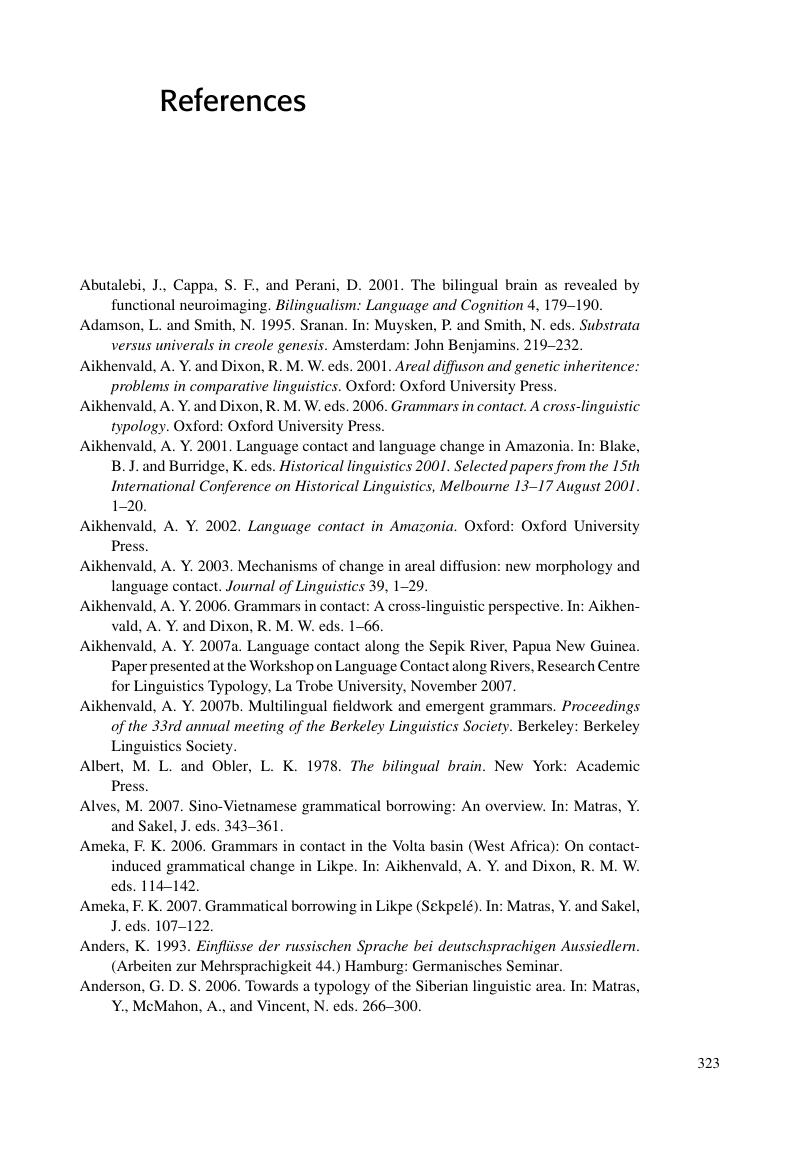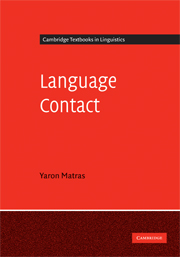Book contents
- Frontmatter
- Contents
- List of figures
- Preface
- List of abbreviations
- 1 Introduction
- 2 An emerging multilingual repertoire
- 3 Societal multilingualism
- 4 Acquiring and maintaining a bilingual repertoire
- 5 Crossing the boundaries: codeswitching in conversation
- 6 The replication of linguistic ‘matter’
- 7 Lexical borrowing
- 8 Grammatical and phonological borrowing
- 9 Converging structures: pattern replication
- 10 Contact languages
- 11 Outlook
- Notes
- References
- Author index
- Language index
- Subject index
- References
References
Published online by Cambridge University Press: 05 June 2012
- Frontmatter
- Contents
- List of figures
- Preface
- List of abbreviations
- 1 Introduction
- 2 An emerging multilingual repertoire
- 3 Societal multilingualism
- 4 Acquiring and maintaining a bilingual repertoire
- 5 Crossing the boundaries: codeswitching in conversation
- 6 The replication of linguistic ‘matter’
- 7 Lexical borrowing
- 8 Grammatical and phonological borrowing
- 9 Converging structures: pattern replication
- 10 Contact languages
- 11 Outlook
- Notes
- References
- Author index
- Language index
- Subject index
- References
Summary

- Type
- Chapter
- Information
- Language Contact , pp. 323 - 349Publisher: Cambridge University PressPrint publication year: 2009



